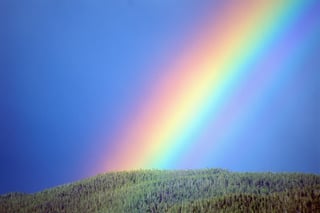 Did you know that the color pink used to be considered a masculine color? That a century ago blue was considered a very feminine color?
Did you know that the color pink used to be considered a masculine color? That a century ago blue was considered a very feminine color?
Understanding that external influences such as culture change how color is perceived by society over time is important when designing packaging for a brand that you’re hoping will have a long life. There are plenty of things that businesses need to take into consideration regarding product packaging: product information, price, materials used, legality…the list goes on and on. So why focus on color?
Most of the long-lasting and influential brands in the world have colors that they are easily recognized by. These colors are not chosen without foresight, there is meaning behind the design in nearly every instance, and the effectiveness of the design can be seen in consumer recall. Need to be convinced? Picture the Apple logo. Now McDonalds. Now Coke.
Black and white, yellow, and red. These are almost certainly the colors that you picture in your mind when thinking of these iconic brands. But there’s even more value in a color than just brand recognition. Let’s take a look at how most peoples minds react to different colors.
White
As a general rule, the more color added to a design, the less “sophisticated” that product is perceived as. This may be why brands such as Apple choose to keep their design simple and monochrome.
White conveys innocence, safety, purity and simplicity. White is often a great color to use as a canvas for the rest of your design, as other colors, such as red, yellow, and black complement it very well.
Black
Power, control, class, mystery.
The color black can send many messages to consumers depending on how it is used in the overall design. Combine black with pink to give the product a more feminine look, complement it with white for the sophisticated look described above, or add gold to add the illusion of added value to the product.
Blue
With blue, brightness is key. A professional dark blue can send a completely different message than a playful sky blue. Many cultures relate the color blue to loyalty, unity, legality, and intelligence. While blue is the most liked color worldwide by both males and females, shades of blue offer very different results. Younger demographics seem to prefer bight electric or neon blues, while an older audience demonstrates a preference towards flat blue colors that have a calmer feel.
Blue is a fantastic color to use in most product designs—just make sure you use it correctly!
Red
The color of passion and excitement, red can be a great attention grabber and can be used to induce physical reactions from consumers. Studies show that viewing the color red speeds up the metabolism and causes faster breathing. In some cases, red has even been shown to cause higher blood pressure.
Much like blue, red needs to be used carefully. The darker a red is, the more perceived value the product will have.
Related: How to Design Sustainable Product Packaging and Save Money
Green
A color that is especially useful at a time when ecologically friendly packaging is one of the top concerns for consumers, green is the color of nature, the body, and emotion. For food and beverage products, green suggests that the product is healthy, organic, or was made using environmentally-friendly practices.
Green is also a pretty universal sign for “correct” as opposed to the red “wrong” connotation. Include green with product instructions if applicable, making it clear exactly how your product should be used.
Yellow
Yellow makes people happy. Optimistic and cheerful, yellows are generally a great attention grabber, but are also perceived as unstable. Having excessive amounts of yellow can actually make people uncomfortable as the brightness of the color overpowers other elements of the design.
An important factoid to keep in mind when using yellow—it is one of the only colors that almost always looks best in purest form. Shades of yellow can come across as sickly or gross, feelings you don’t want consumers correlating with your product.
Orange
A color that is often associated with creativity, and has actually been shown to increase oxygen supply to the brain. A youthful color, orange is a good choice when you want to excite customers and leave them uncertain. Orange is a curious color, not quite as aggressive as red, but less cheerful than yellow. Be careful if using orange in food and beverage packaging—it is often associated with certain flavors or brands, such as orange soda and cheese.
Regardless of the color combination you choose, make sure that you keep in mind your target demographic throughout the entire design process. Use retail sales data collected by field representatives to understand your competitors and their packaging. If consumers are buying one color of packaging far more than others, it may give some insight into the mentality of the consumer who is about to make a purchase in your industry. With the right planning and research, you can build a brand that consumers can quickly recall, and that remains competitive in the market for a very long time.


 Did you know that the color pink used to be
Did you know that the color pink used to be 

